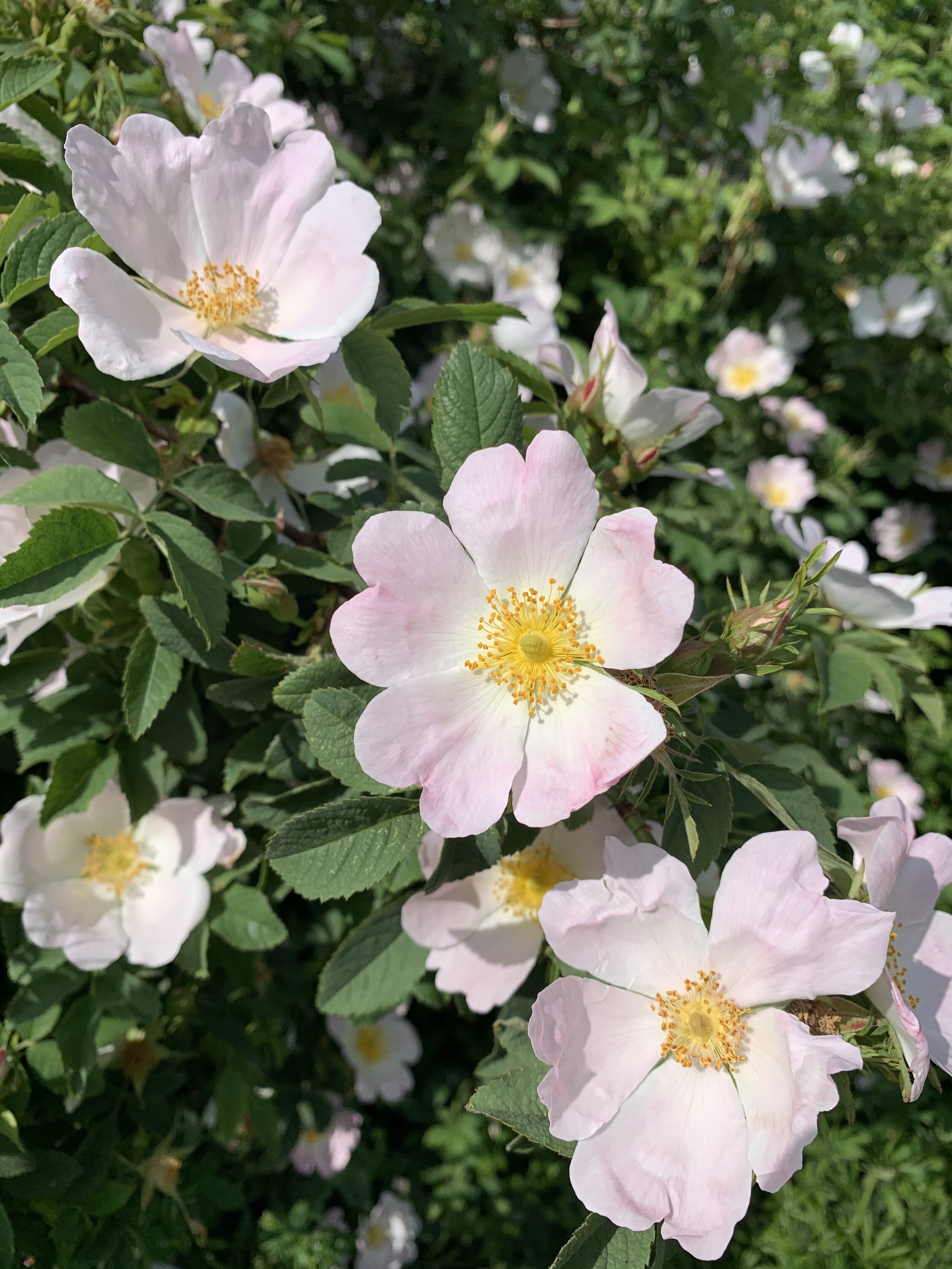
dog rose
Rosa Canina
Historically the LGBTQ+ community has been stigmatised and often referred to as being “unnatural.” However, upon closer examination the natural world is rife with queerness. One set of examples can be found in the variety of plants and their reproductive methods. Nature is in constant flux and is at its best when rich in diversity. Concepts such as science and culture, male and female, human and nature are often contrasted in stark binaries but queerness favours multiplicity and gradients. Moving forward, queer stories from culture and nature should be more broadly interwoven into our understanding of the world.
dog rose flowerWhen thinking about the Dog Rose and its cultural symbolism, it is often considered an icon of femininity in the West. This might have something to do with the pink colour, soft heart shaped petals, and sweet scent. However, in the Middle East the rose is considered a masculine scent that is used in men’s fragrances such as Dhan al Ward. The rose’s famous scent has played a large part in the history of perfumery going back thousands of years, and it is heavily cultivated in countries like Saudi Arabia and Iran. This sense of duality can also be found in the conflicting associations of pleasure and pain connected to the rose’s flower and thorns. People often regard nature in dualistic terms (like “male or female”, “human or not human”, and “natural or unnatural”) when, in fact, nature exists in a continuous state. This plant helps us to see how arbitrary signifiers of masculinity and femininity can be.
birds like robins eat rose hipsThe Dog Rose is native to Europe, northwest Africa, and western Asia. It is a climbing rose with curved prickles that can grow up to 3 metres in height. Their flowers tend to bloom in the summer, with five petals and many stamens. They are commonly seen in hedgerows, thickets, and woodland edges. Dog roses support a wide variety of wildlife: the flowers attract bees, butterflies, and moths, and their dense growth provides habitat for birds and small mammals. Moreover, their fruit, known as rosehips, are a great source of food for small birds, like thrushes and robins, and loved by humans for their high levels of Vitamin C (they are a staple in Scandinavia).
Further Reading:
https://en.wikipedia.org/wiki/Rosa_canina
https://www.wildlifetrusts.org/wildlife-explorer/trees-and-shrubs/dog-rose




